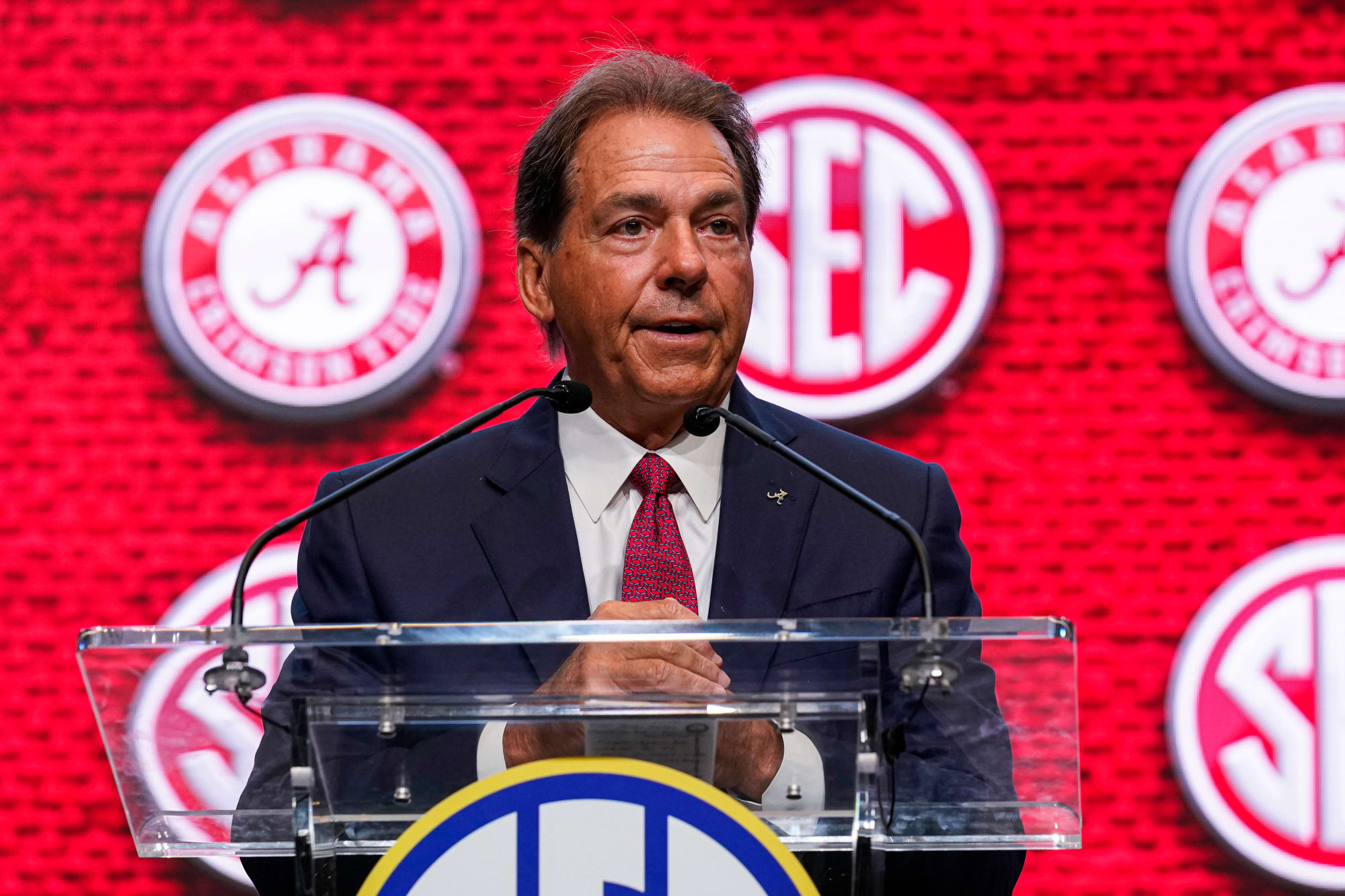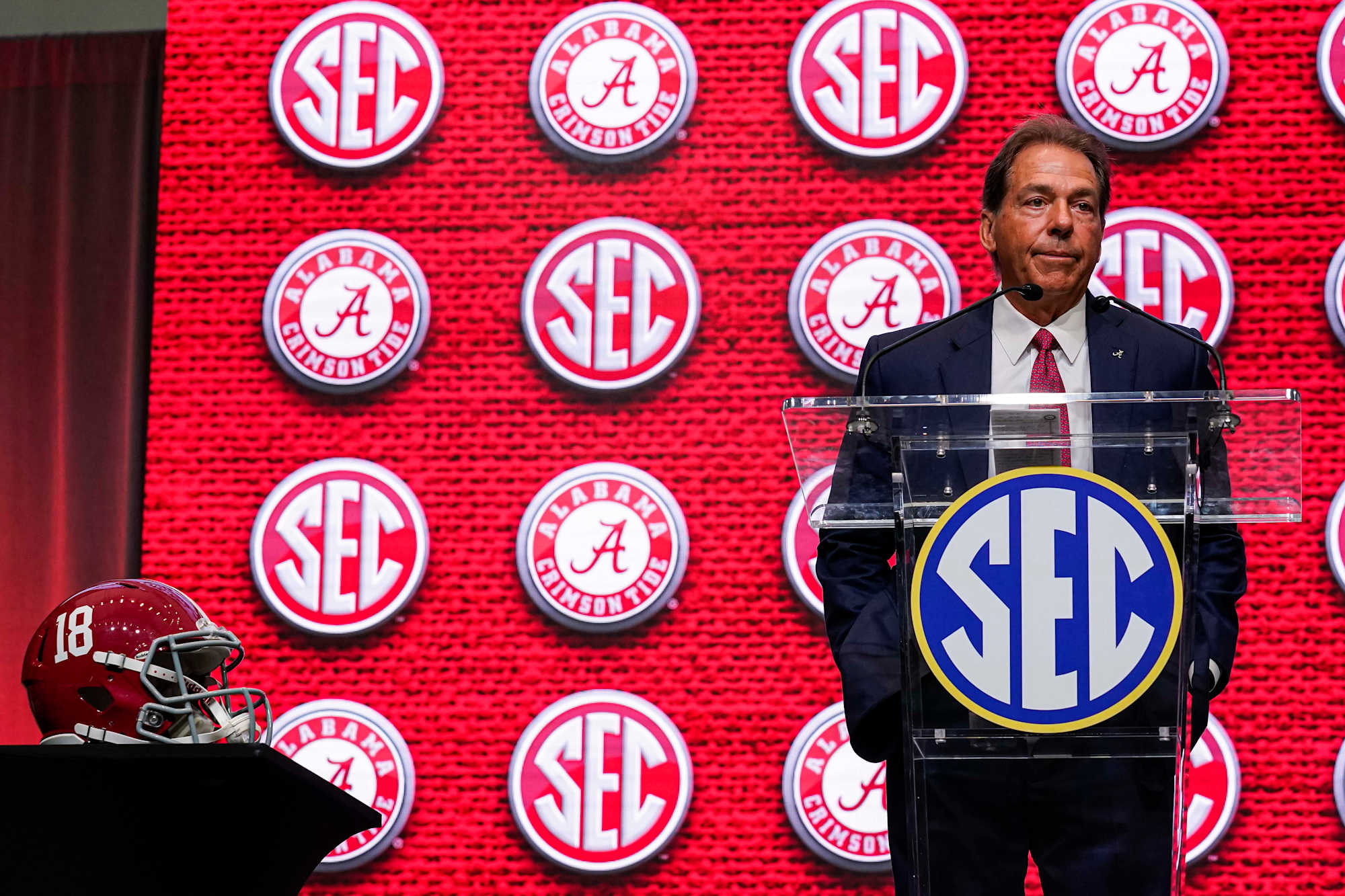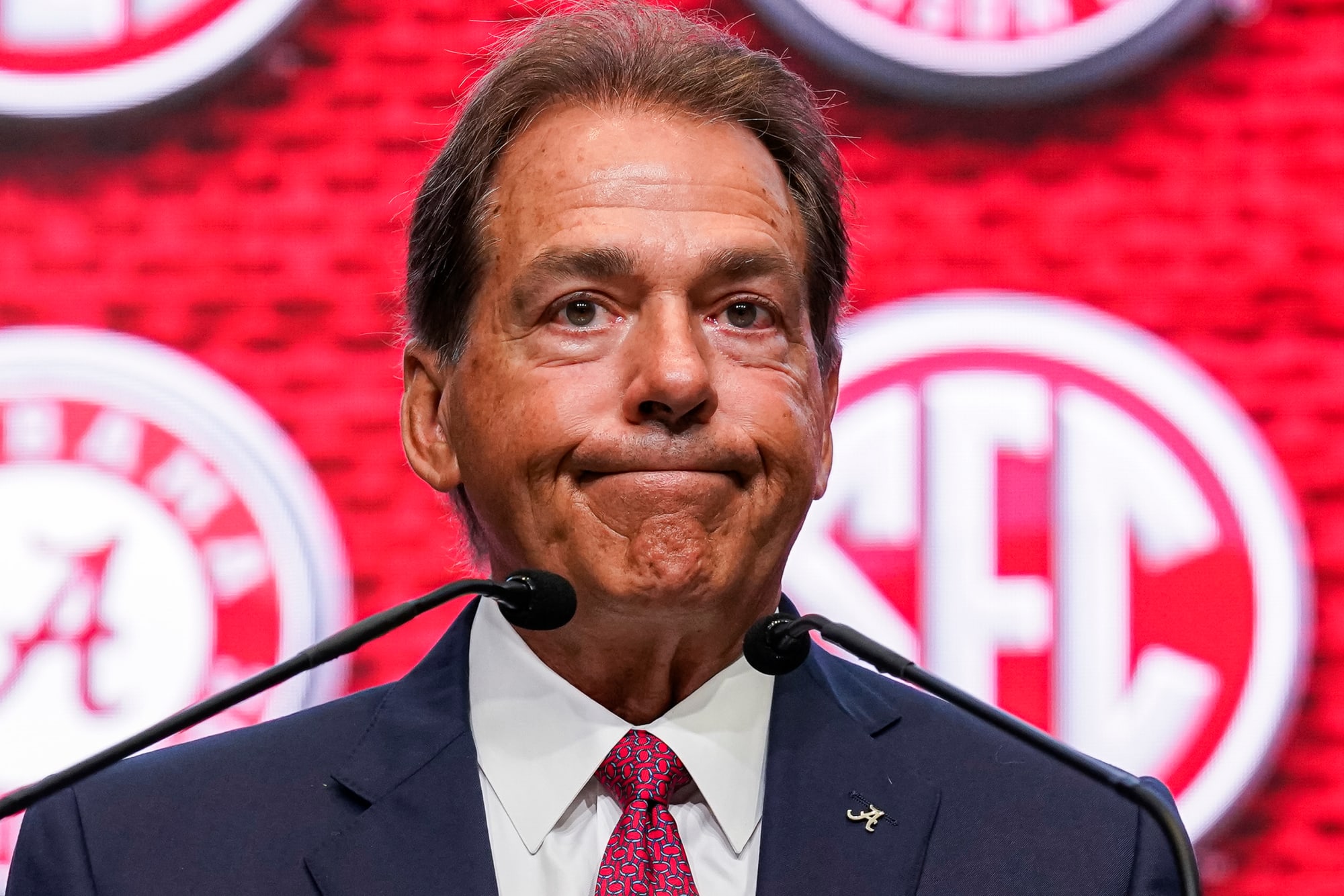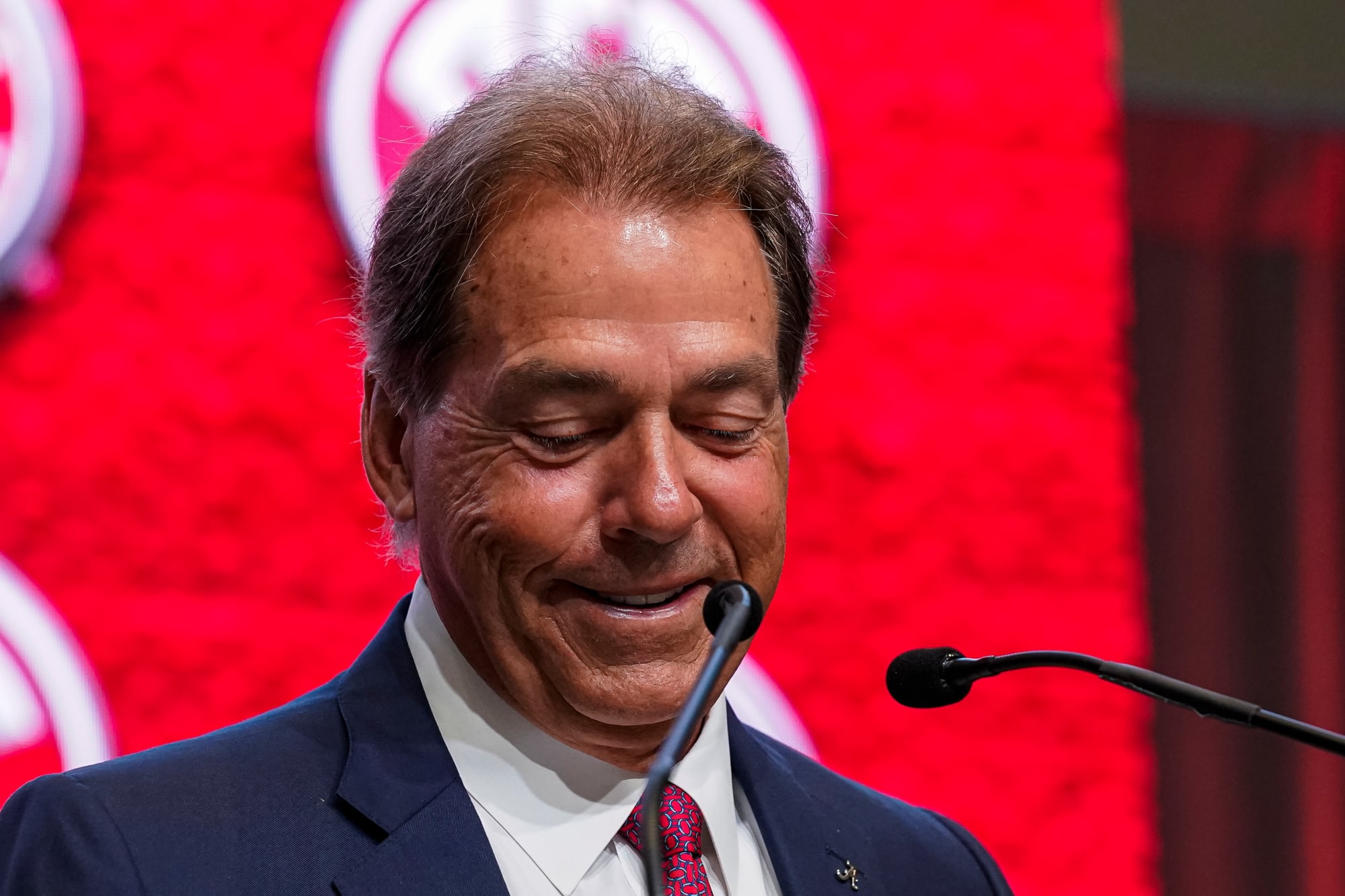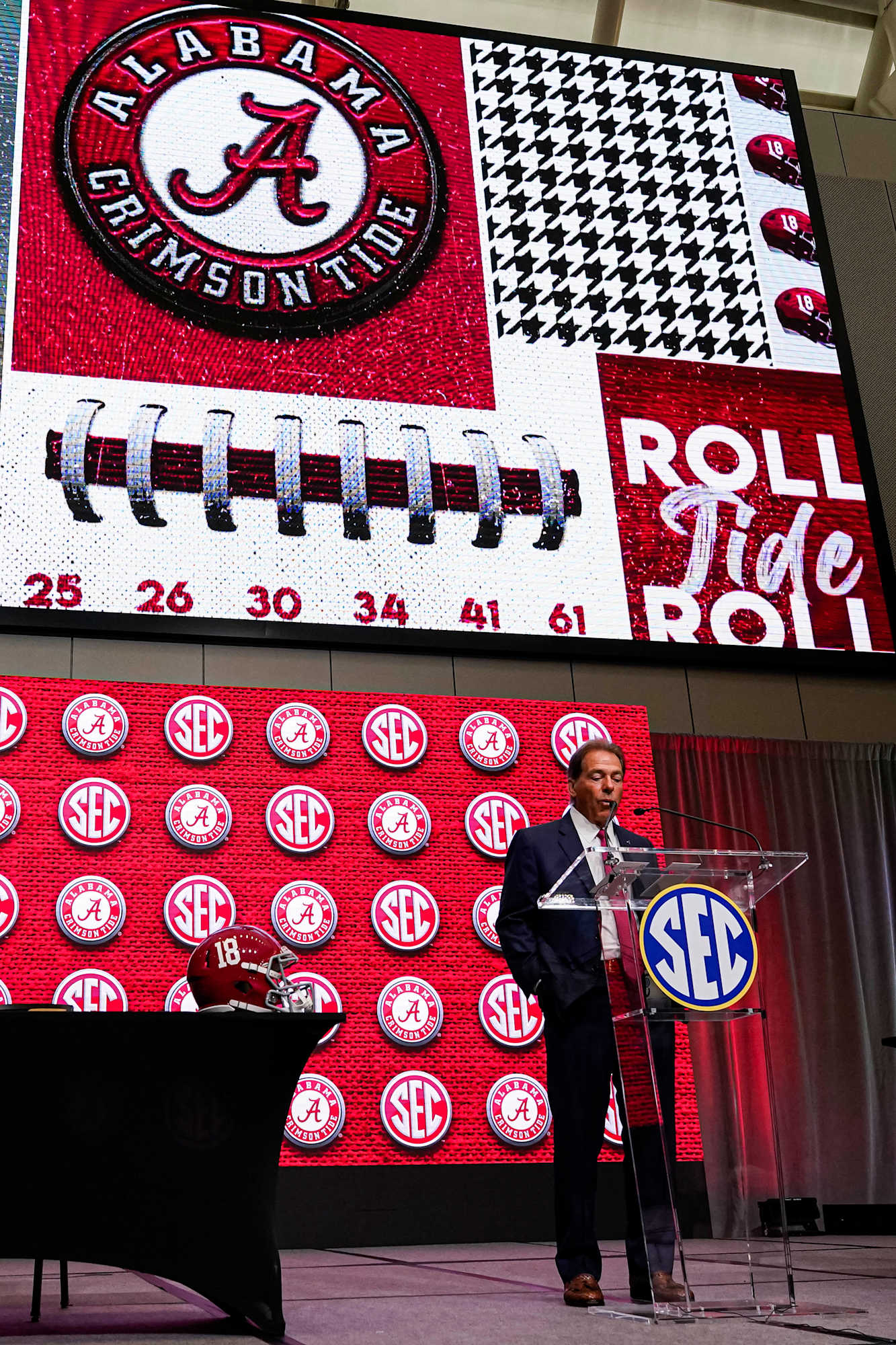Nick Saban: "Name, Image and Likeness is not an issue for us at Alabama"
"Name, image and likeness is not an issue for us at Alabama." -Nick Saban
ATLANTA — The words reverberated off of the walls of the College Football Hall of Fame as Alabama's head football coach spoke in front of reporters at the 2022 SEC Football Media Days on Tuesday.
Saban is no stranger to taking questions regarding Name, Image and Likeness. In fact, he has become quite the figurehead among college coaches in both advocating for NIL as well as being one of the biggest supporters for change in its implementation.
And why shouldn't he be? Over the past year that NIL has been integrated into the world of college athletics, Saban has arguably been one of the more transparent coaches, frequently citing that Crimson Tide football players made roughly $3 million dollars across the 2021-22 academic year. Couple that with the fact that Alabama's brand has more to gain — and more to lose — than most other athletic programs across the country, and Saban — whether he likes it or not — has quickly risen to the top when it comes to NIL authority figures.
To put it simple terms: when Nick Saban talks NIL, people listen.
During SEC commissioner Greg Sankey's opening remarks on Monday, he reiterated that NIL needs wide-sweeping legislation — from possibly as high as the congressional level.
"A clear, enforceable standard is needed to support national competition and the continuing ability to conduct national championships – the CFP, the Final Four, the College World Series – and every other national championship," Sankey said.
Saban might be quick to reveal the $3 million figure that he frequently throws around — probably more as a subtle recruiting tool rather than to inform reporters — but it's still more than most other coaches are willing to give. But even Saban himself is using that number in a vague manner instead of giving itemized lists of who exactly is making what kind of monetary figures. This has become a tricky line regarding NIL.
The learning curve has not just been steep for coaches and administrators, but also players as well. Crimson Tide quarterback Bryce Young, who was one of the highest-paid college athletes last season, noted as such during his time with the media in Atlanta.
"I think the biggest thing I’ve learned is just knowing how to manage it and how important that is," Young said. "For me, it’s having priorities, just making sure I’m doing whatever it is that needs to be done for the team first and football first. When that comes first, making sure that’s handled, and then anything that presents itself and makes sense for me NIL wise or business wise, pursuing it and doing what’s good for me on that side. But making sure football comes first.
"That’s what I’ve learned— at least for me, that’s been the best way to handle it."
Currently, there is no cap for how much money and incentives players can earn. In terms of guidelines for Alabama, there are few restrictions for how players can make that money outside of accepting sponsorship deals promoting alcohol, tobacco and adult entertainment. While many believe that players should have to report their earnings in order to provide academic institutions with a degree of transparency, there is just as much pushback that players' earnings should remain a private matter.
Saban and Alabama certainly have one of the more marketable brands among college athletics, and with that comes a hefty amount of scrutiny. To go back to Saban's original point: he's not concerned with if NIL will hurt Alabama and admitted that the Crimson Tide is on the better end of the spectrum.
"The biggest concern is how does this impact and affect recruiting?" Saban said. "On the recruiting trail right now, there's a lot of people using this as inducements to go to their school by making promises as to whether they may or may not be able to keep in terms of what players are doing. I think that is what can create a competitive balance issue between the haves and have nots. We're one of the haves. Don't think that what I'm saying is a concern that we have at Alabama because we're one of the haves.
"Everybody in college football cannot do these things relative to how they raise money in a collective or whatever, how they distribute money to players. Those are the concerns that I have in terms of how do we place guidelines around this so that we can maintain a competitive balance."
Back in May, Saban and Texas A&M head coach Jimbo Fisher were involved in a highly-publicized public spat that began when Saban not-so-subtly hinted that a Texas A&M collective had been involved in providing funds to its most recent recruiting class — the best class in Aggies football history. Fisher responded in kind with an emergency press conference the next day to defend himself, his program and his players.
While it appears that the duo have buried the metaphorical hatchet, the exchange brought many NIL issues into the light. While Saban later admitted that he should not have called out the Texas A&M program like he did, he also elaborated by saying that he did not believe the Aggies had conducted any wrongdoing. Rather, he believed that what they had allegedly had done was perfectly legal — and therein lies the problem.
Saban's not worried about Alabama falling below the standard. Quite the opposite, in fact. However, Saban has long advocated for an equal playing field and for competitive balance, which is why he continues to voice his concerns for NIL potentially widening the gap between the top programs in college football and those struggling to keep up.
"We have a great brand at Alabama, so players are certainly — their value there is going to be enhanced because of the value that our brand can help them create," Saban said. "But the thing that I have sort of expressed, not concerns about, but there's got to be some uniformity and protocol of how name, image and likeness is implemented.
"I think there's probably a couple factors that are important in that. How does this impact competitive balance in college athletics? And is there transparency to maintain fairness across the board in terms of college athletics? How do we protect the players? Because there's more and more people that are trying to get between the player and the money."
If he were asked on his authority in the world of NIL, Saban would likely shrug off the label — just like he's done when asked about the transfer portal, playoff expansion and conference realignment. However, it's going to be coaches like Saban who have the loudest voices while speaking from the largest stages that will be responsible for change in the NIL that could benefit those smaller programs who face the most to lose.
Saban closed his NIL remarks at SEC Media Days by reiterating the urgent need for competitive balance one final time.
"There is no competitive sport anywhere that doesn't have guidelines on how they maintain some kind of competitive balance," Saban said. "I think that's important to college football. I think it's important to fans. That's why they have rules in the NFL where you have a salary cap, you have difficult schedules if you have a successful season, you draft later if you have a successful season, you draft early if you have an unsuccessful season.
"All these things are created so there is competitive balance, which is great for the game and it's great for fans. Name, image and likeness is not an issue for us at Alabama. Our players I think did better than anybody in the country last year."
